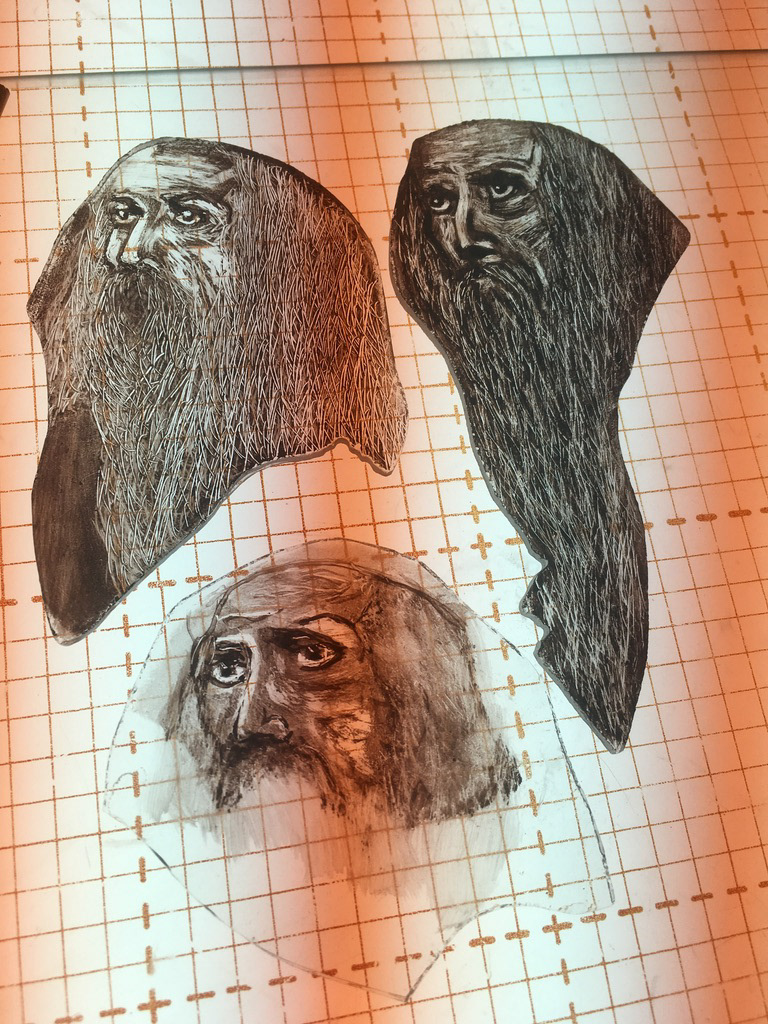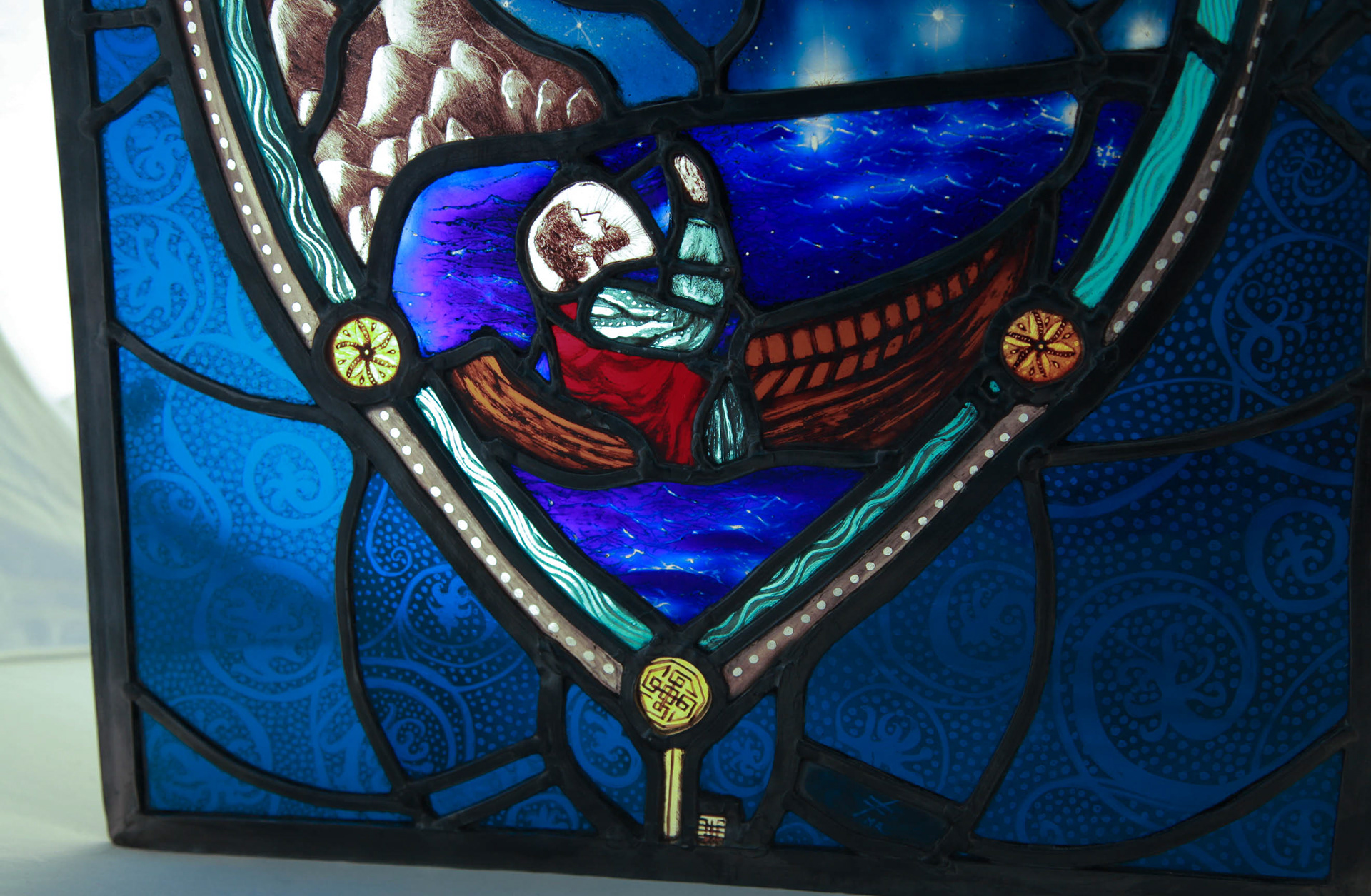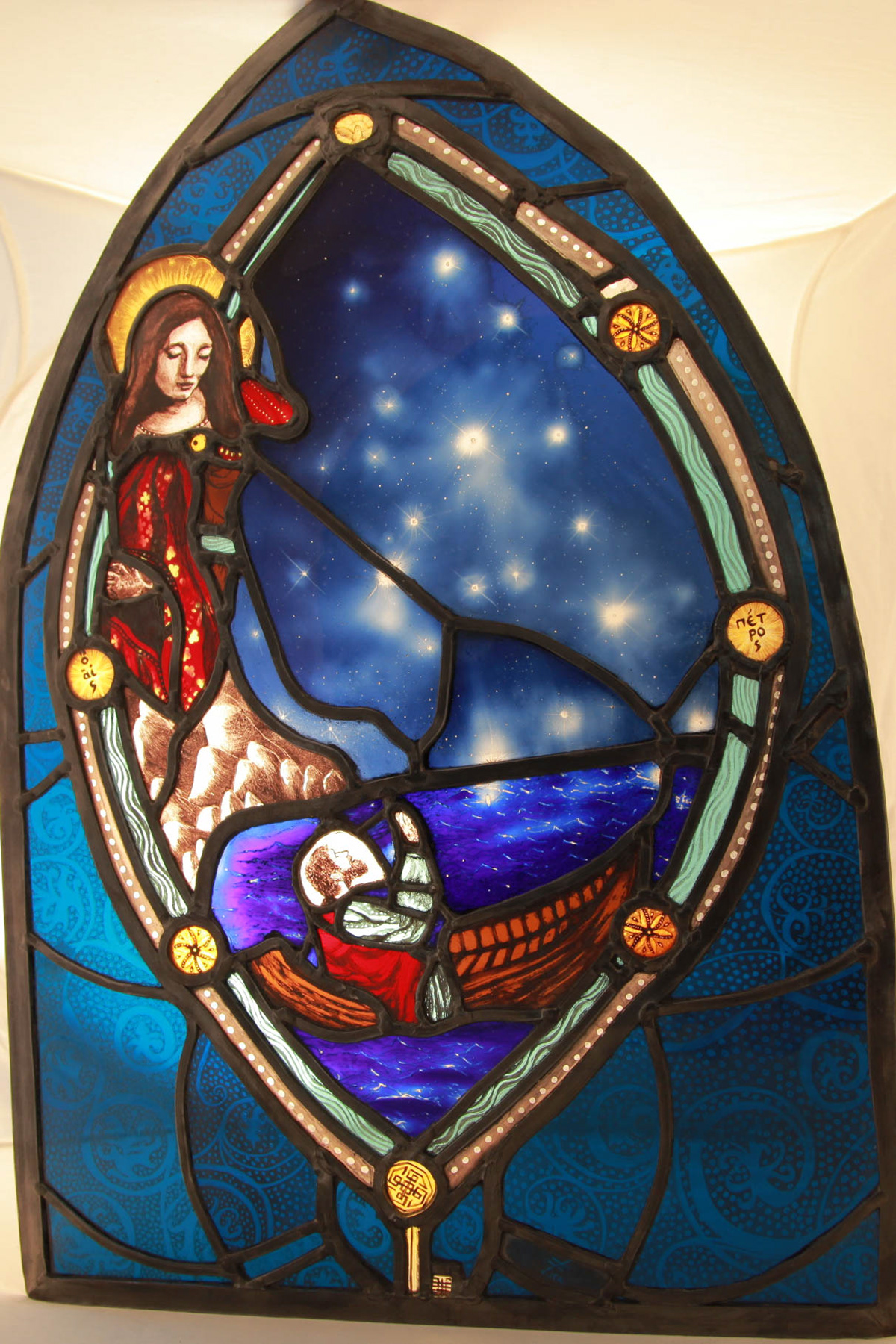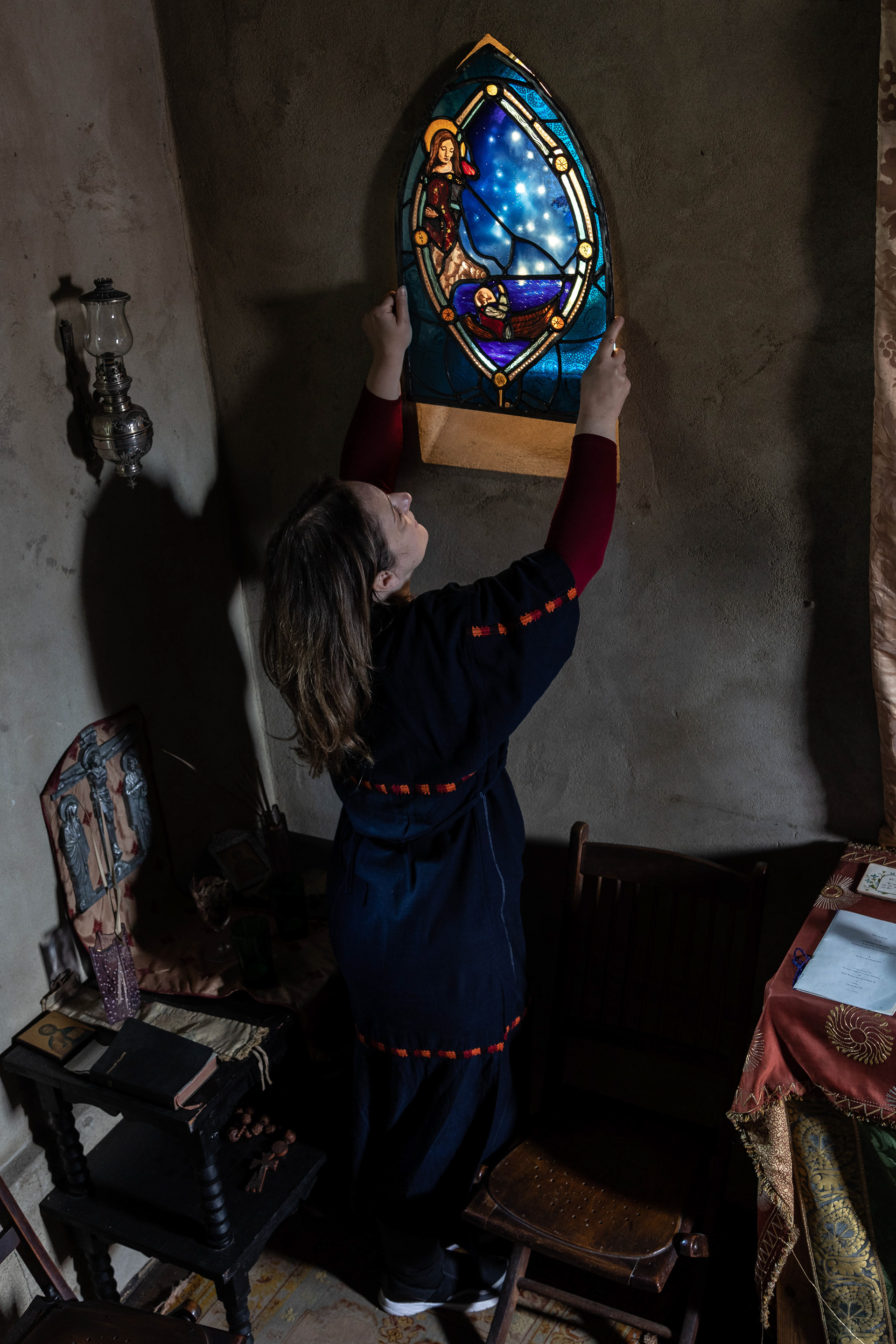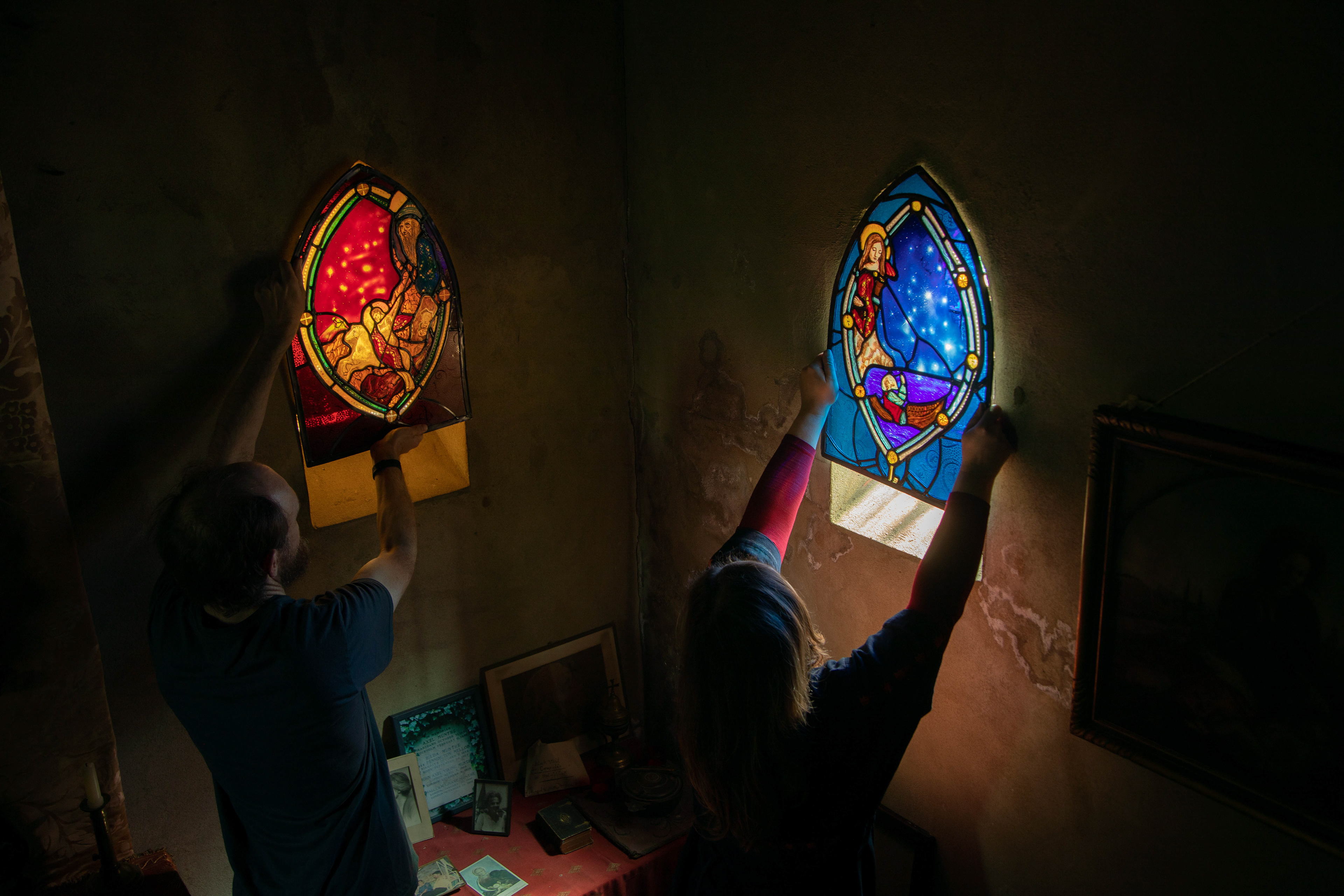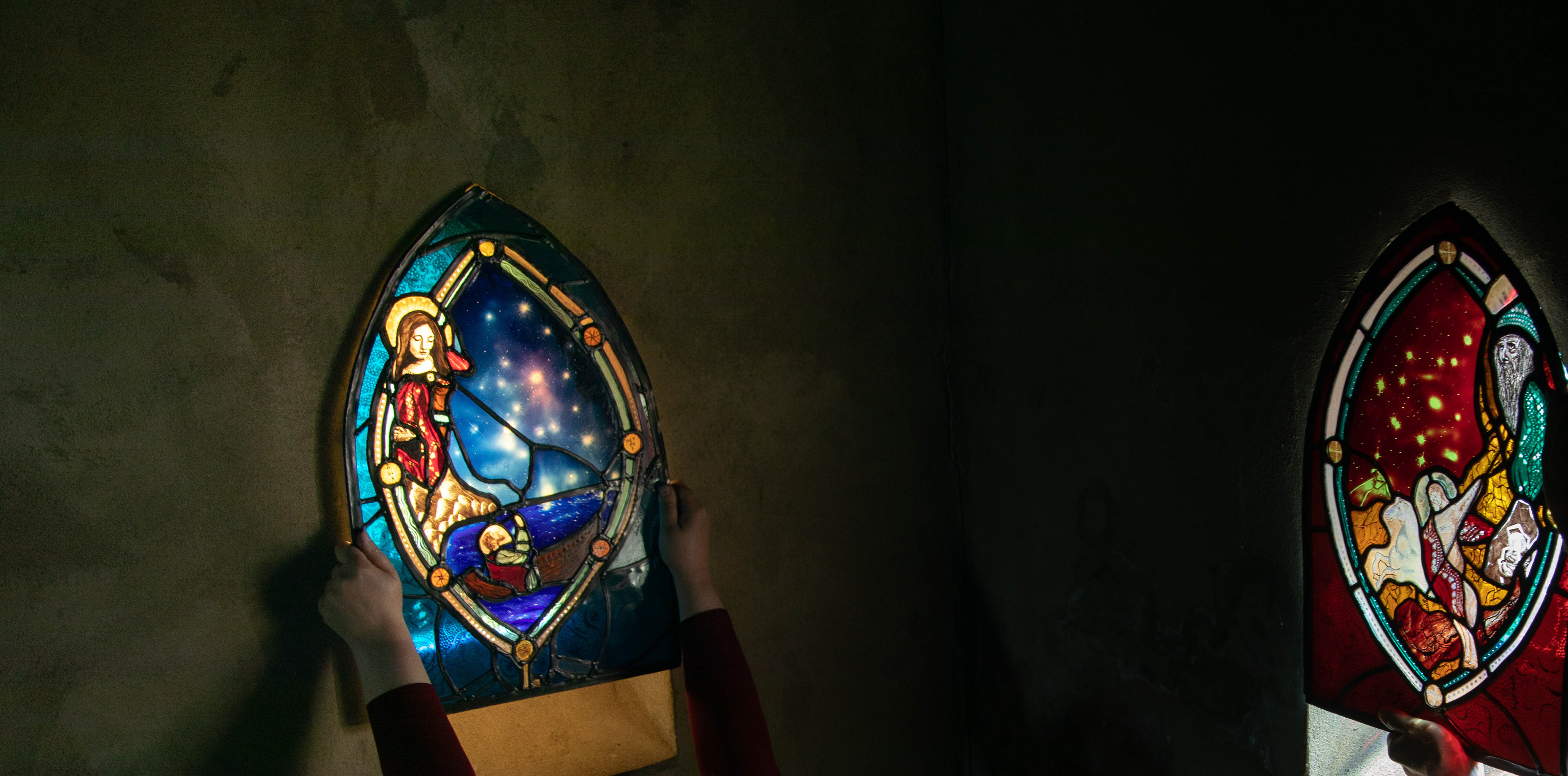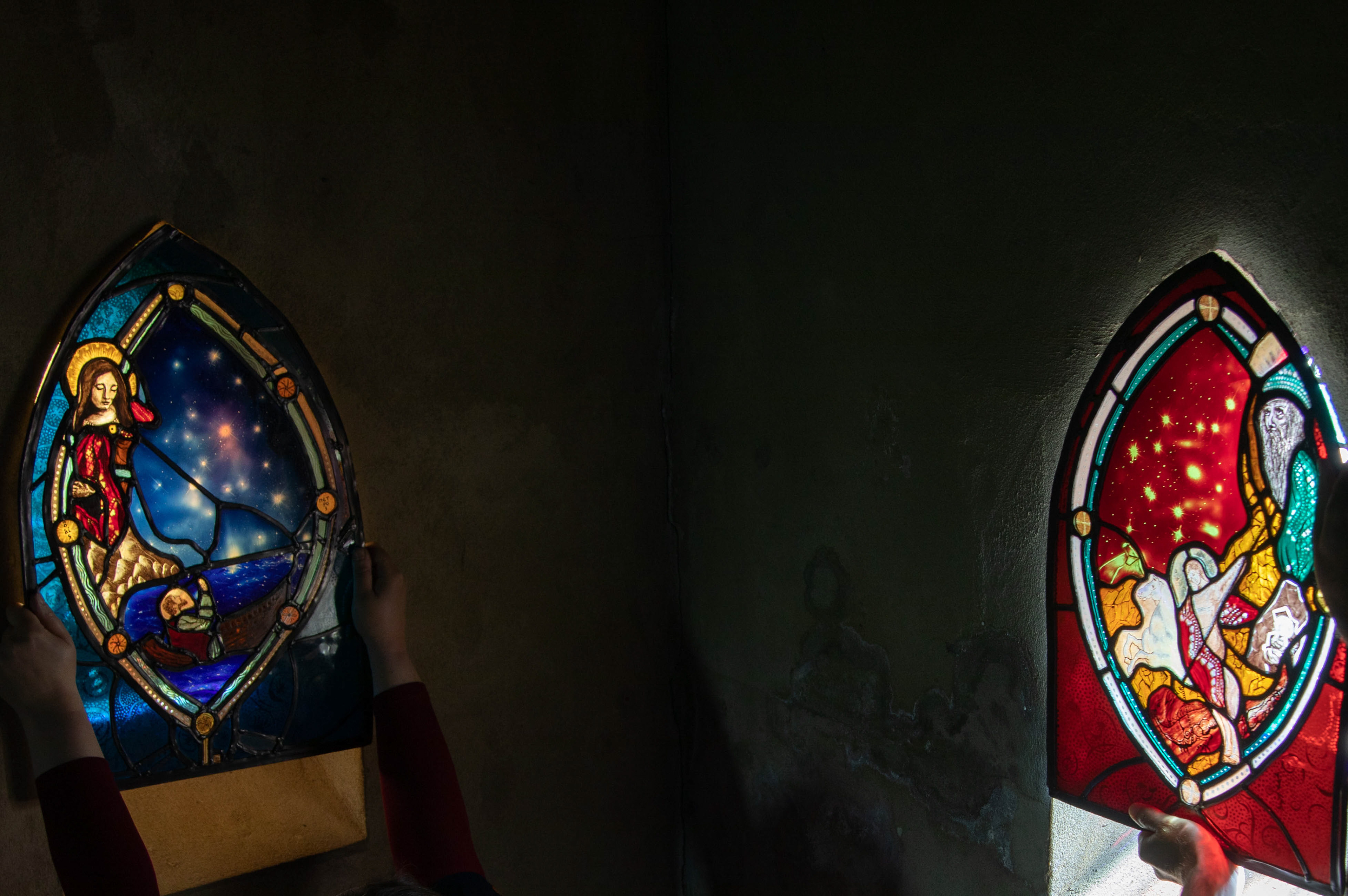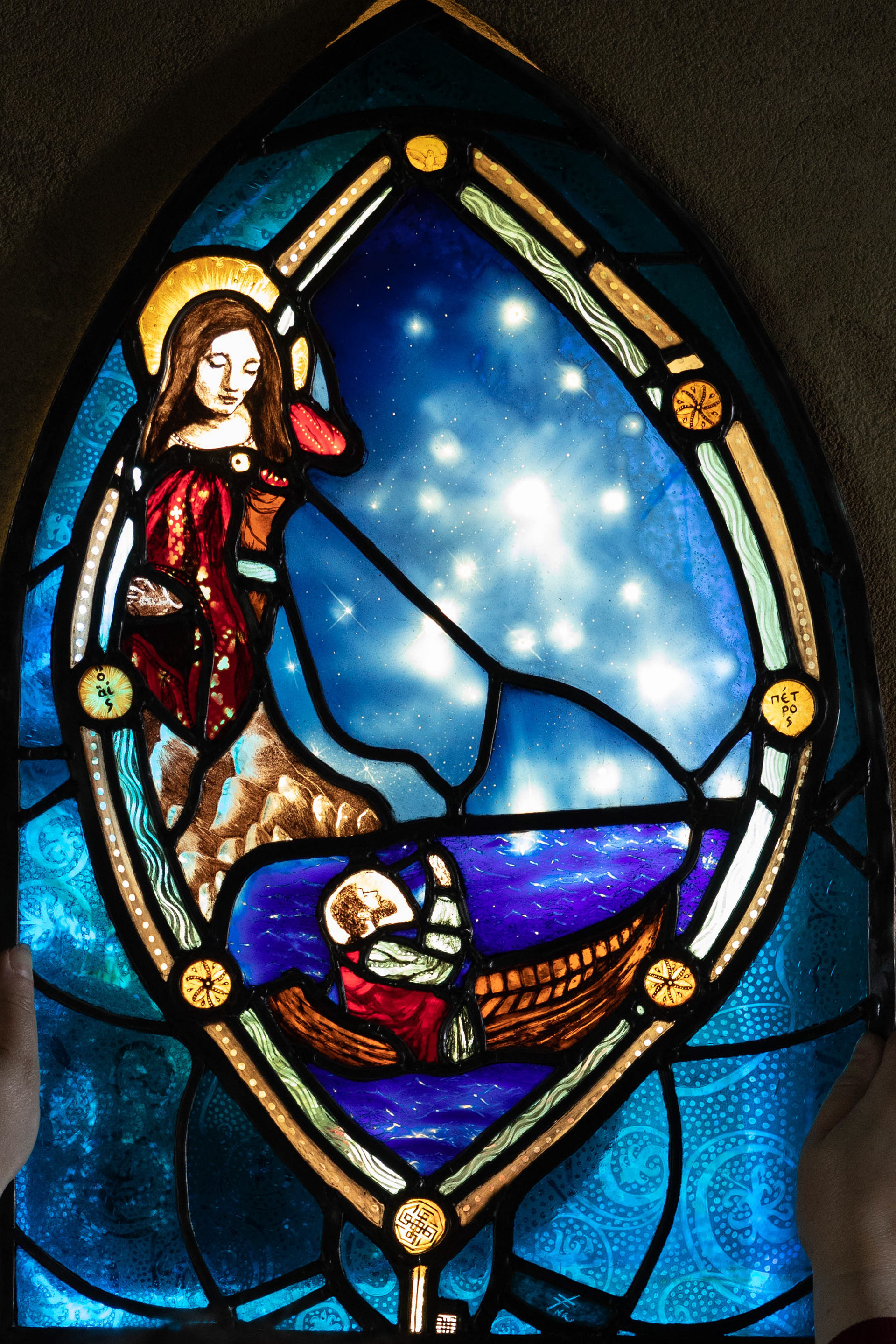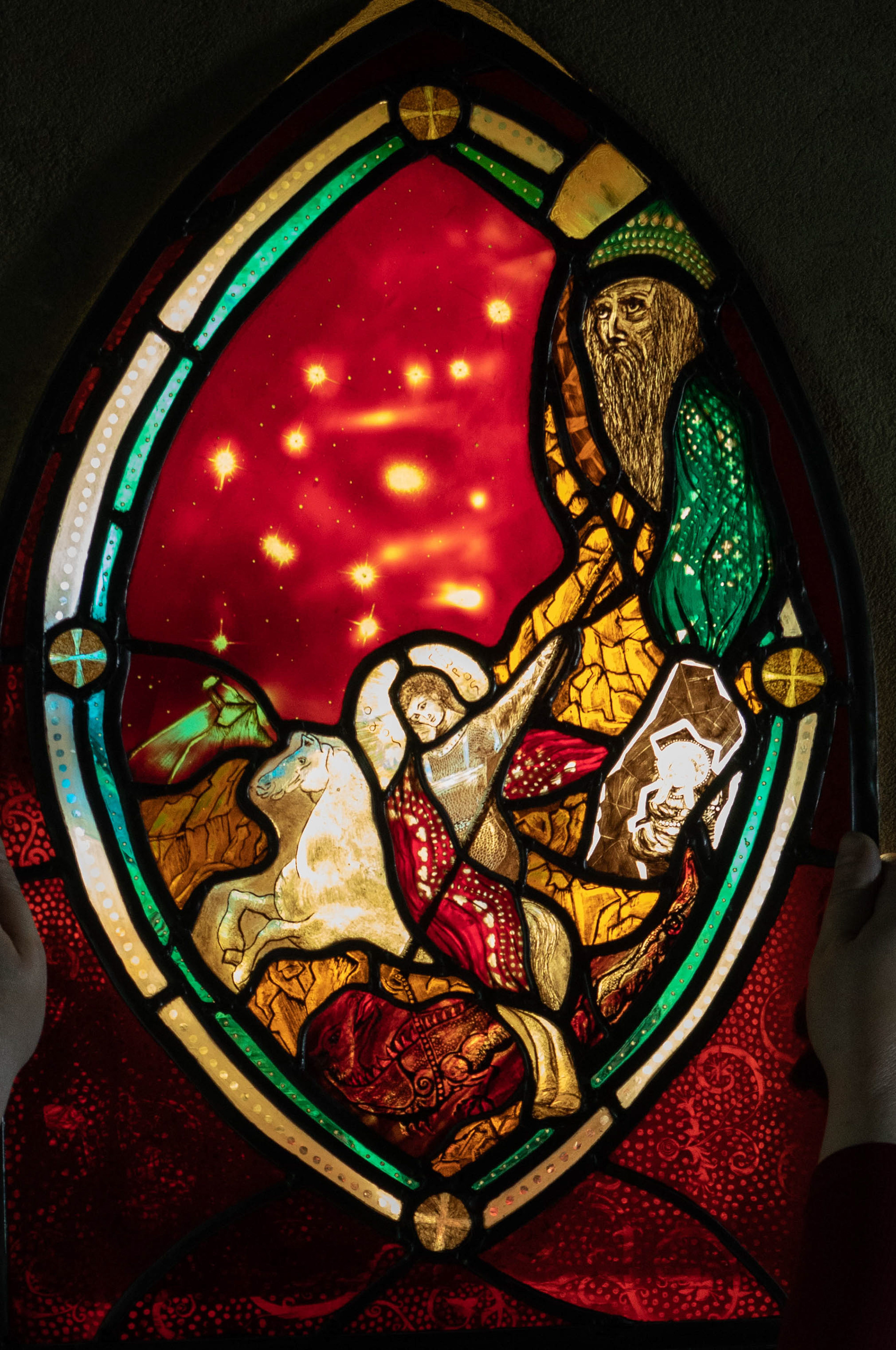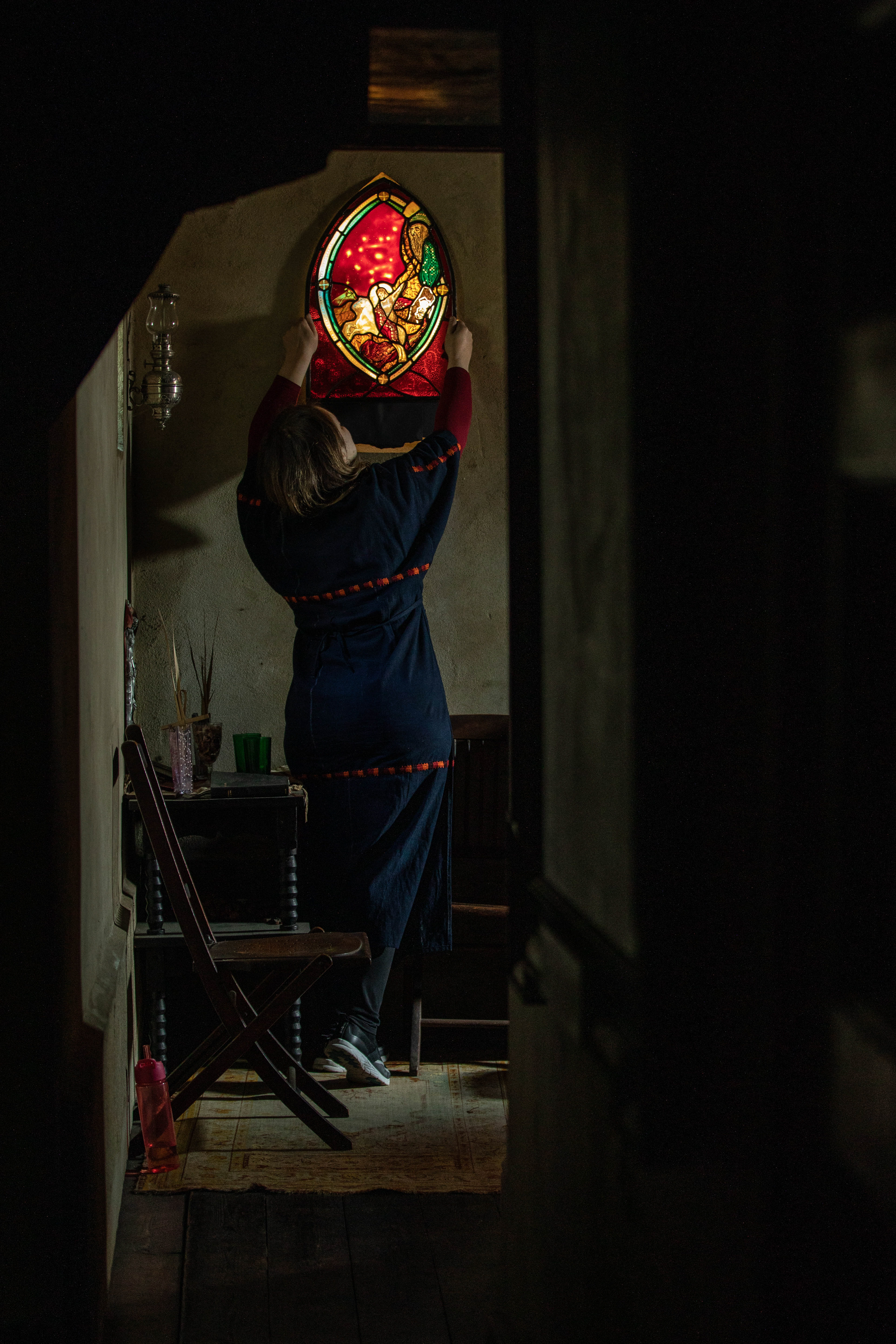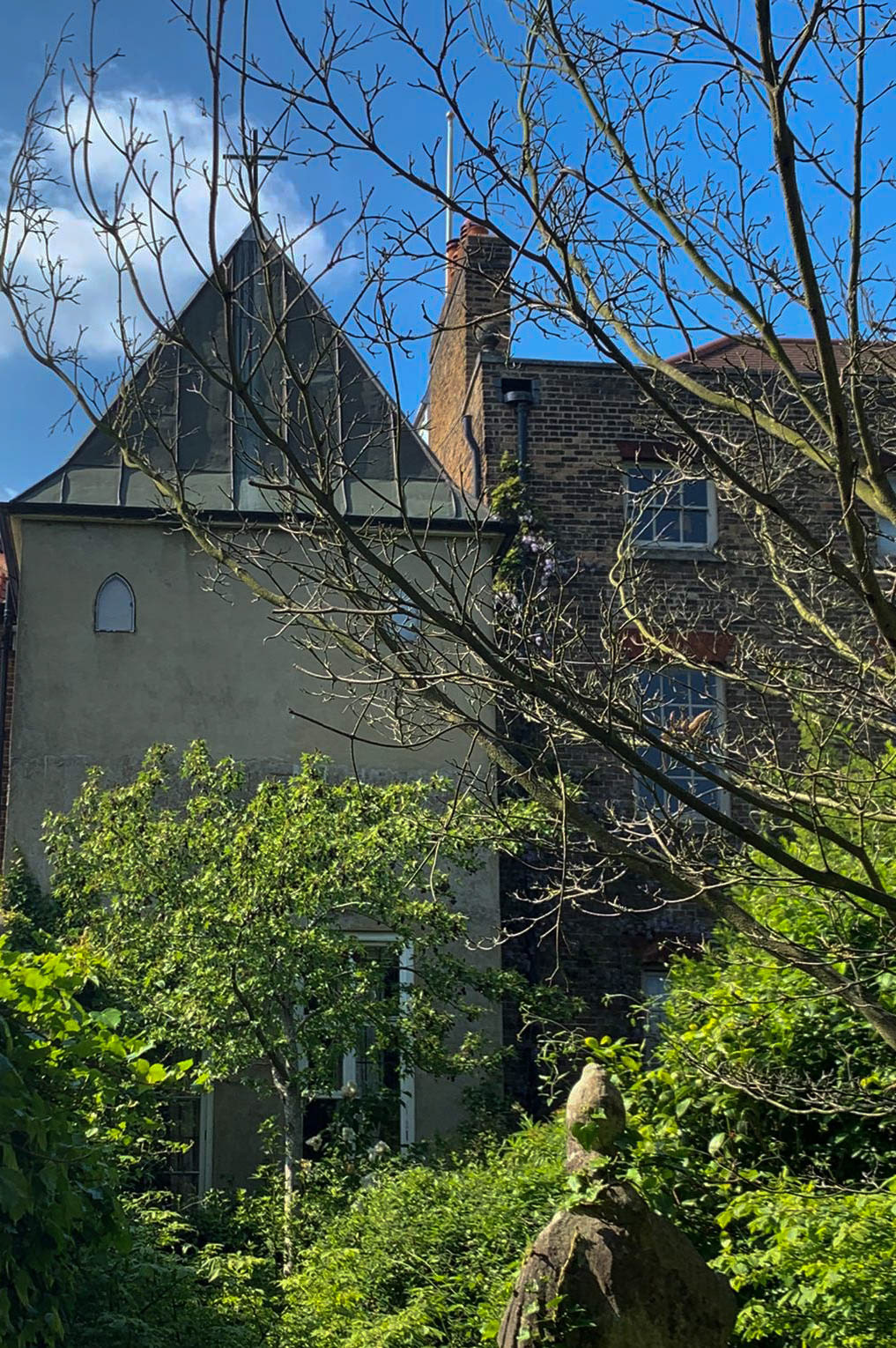Introduction to the Two Stained Glass Leaded Light Panels.
All religions and spiritual ways teach that man’s soul has to make a transition which is portrayed in icons and in allegorical literature as the passage from lower to higher, from outer to inner, from darkness to light and from death to light.
Richard Temple
These two complimentary stained glass panels were commissioned by Adam John Munthe in memory of his late father Malcolm Grane Ludovic Martin Munthe, who created the original sketches himself for his chapel at Southside House, Wimbledon.
Both designs are contained within a mandorla, an ancient sacred geometrical symbol, symbolising union and the intersection of two worlds. St Peter and Mary Magdalene’s mandorla is held within six fold geometric symmetry whereas St George and the Dragon within a five fold geometric pattern.
Each panel contains within it symbols found in iconography and can be read as an ascending journey for the pilgrims eyes, through the material world ascending up the mountain to the intermediate world of imagination and beyond to the atemporal.
In the material sphere we encounter St Peter and St George and the Dragon enacting their cosmic dramas in the sea and in the desert. Ascending the mountains, we meet the Feminine principle and the Wise Old Man; both archetypes which act as bridges between the sacred and profane and offer unseen guidance. Beyond them we ascend to the third level, which is unseeable by our eyes, but which is maybe glimpsed by St Peter and the Wise Old Man, who’s eyes are drawn upward and beyond…
St Peter and Mary Magdalene
(Liminality)
Superata tellus sidera donat *
And the Earth Transcended brings us the gift of the stars
Boethius *
This predominately blue panel shows St Peter in a small boat, looking up and beyond the pleiades star cluster to the infinite and unknowable universe. As his small vessel contains him and he is gently rocked by the sea which can symbolise the unconscious aspects of the self.
The horizontal line of the holy mountains draws the eye upwards and emphasises the distinction between the Earthly and Divine realms. Here we meet the Feminine principle, Mary Magdalene and the many forms of unconditional love which we receive on a daily basis, without necessarily being aware of.
Who is sought and who is the seeker?
The Man of light in me; my being of light -
Mary Magdalene in Pistis Sophia*
St Peter is associated with liminality and holds the role of the Gatekeeper. Hence at the bottom of the panel we find the key, containing within it the active principle.
Peter is a guide to help us navigate the various thresholds we must all pass as we expand our experience, understanding and perception.
* Both quotes are from The Man of Light in Iranian Sufism by Henry Corbin
St George and the Dragon
(Willpower)
The warrior is the man who, having established attention and silence within himself, tames his earthy nature in order to become the recipient of divine influences.
Richard Temple
Inspired by the the fifteenth century Novgorod School icon of St George and the Dragon (Russian Museum of St Petersburg), this panel has as its backdrop an unearthly red sky and mountainous, desert landscape.
St George, a symbol of controlled strength and power, mounted on a white horse, masters the Dragon (but does not kill him), with his spear, which maintains an equilibrium between the earth and sky. This cosmic drama between our higher and lower forces is not a simple dichotomy of good and evil, rather it is a dance of finding the correct point of equilibrium within.
The horse and dragon reflect and perfectly balance each other and both are under the control of the saint, who looks lovingly at the dragon, which reciprocates his gaze, with no violence or hatred in its eyes.
To the right of the dragon we see the cave from where the dragon has emerged, and holding its tail calmly and lovingly is the image of the Feminine principle. A liminal figure sitting at the cave entrance; a threshold of another level of understanding and an interior ascent up the mountain.
As the eye ascends we see atop the mountain a mysterious figure; a Wise Old Man, dressed in green with his eyes turned upwards and beyond the alien red sky.
*Text excerpts from:Icons and the Mystical Origins of Christianity by Richard Temple

